Costa Rica is known for its many volcanoes, which come in all shapes and sizes. Some, like the famed Arenal Volcano, are cone-shaped and best explored by hiking around the base. Others, like Irazu Volcano near San Jose, are vast craters that you view from above. In this post, we’ll let you know what it’s like to visit Irazu Volcano. We will cover access, getting tickets to the national park, and some tips on when to go and what to bring.
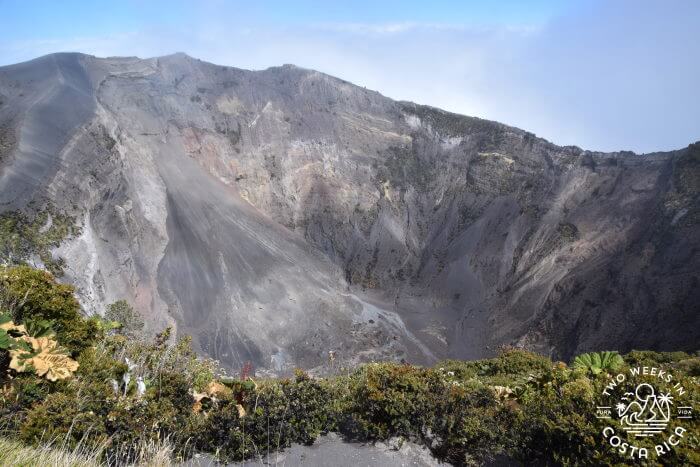
Location
Irazu Volcano is located just east of the capital of San Jose. The nearest city is Cartago.
Though it doesn’t look far on a map, Irazu Volcano is still about a 1.5 hour drive from San Jose with traffic. Irazu is closer to the Orosi Valley, at about one hour.
After going through the bustling city of Cartago, you’ll wind up a curvy mountain road to get to the volcano. This passes through some gorgeous countryside, with lots of farmland. The nicely paved road leads up the steep mountain, bringing you to a very high altitude.
Along the way, you’re likely to encounter some fog and light rain as you reach cloud level. Depending on the day, you might even drive above cloud level.
See the section below for driving directions.
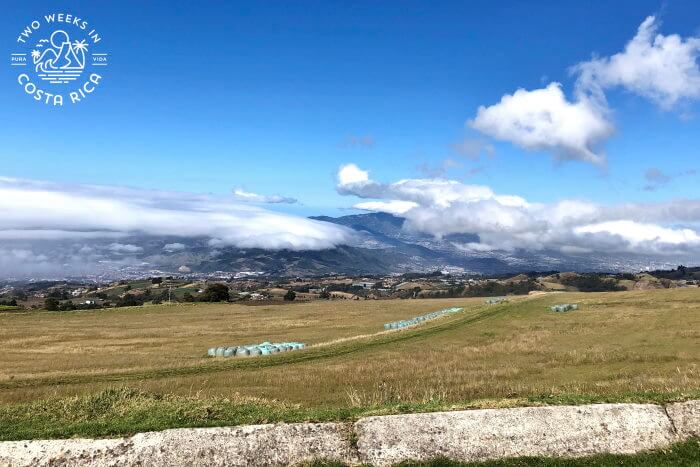
Background
The volcano and much of the surrounding land is protected as Irazu Volcano National Park. This park was created back in 1955. Later, Costa Rica expanded the park to its current size of 2,000 hectares (4,942 acres).
Irazu is an active volcano, meaning it still has seismic activity. Its first eruptions were reported in 1723. It then had major eruptions or significant activity from 1917 to 1994. This included large explosions of ash or steam, mud/debris flows, and rumbling.
One particularly interesting eruption was in 1963. United States President John F. Kennedy was making an important visit to Costa Rica. Irazu greeted him with a huge plume of ash that covered most of the San Jose area.
Since 1994, Irazu has had some minor fumarolic activity, meaning it just produces gases or ash. Scientists in Costa Rica currently give it a level 1 out of 5 for activity. This means it is safe to visit.
Accessing Irazu Volcano
Irazu Volcano is Costa Rica’s tallest volcano at 3,432 meters (11,260 feet). Luckily, you don’t have to hike to access it. You can drive to the top and enter through the national park and visitor’s center.
After presenting your tickets (see below) and passing through the gate, you’ll drive a few minutes more to get to the main parking area. This is for the main trail at the Crater Sector of the national park.
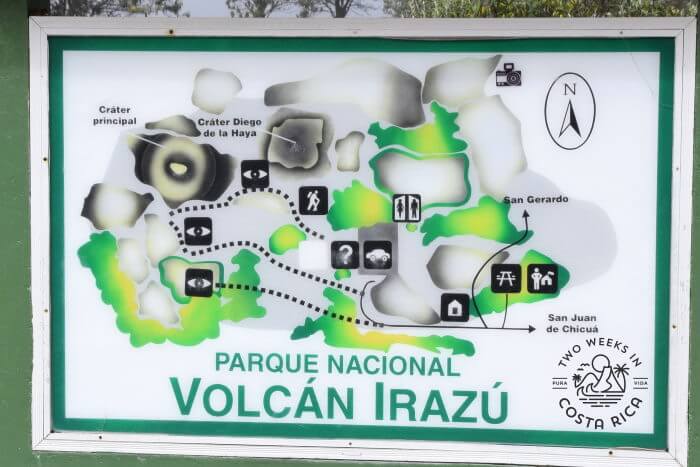
Note: There is another sector of Irazu Volcano National Park called Prusia. This has rustic trails through the forest and some viewpoints. This sector is completely separate from the Crater Sector. It has a different entrance, and you need to purchase separate tickets to visit. In this post, we’re only talking about the Crater Sector where you can see the volcanic craters.
From the parking lot, the walk to the main crater is just a quick three or so minutes along a nicely paved path.
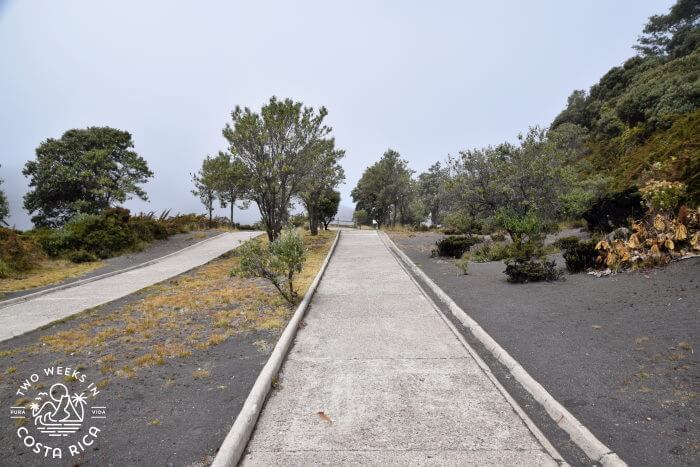
The path is short, but well vegetated. You’ll get to see some interesting plants and shrubs that only grow at this extreme altitude. If you’re interested in birding, you could spend a little extra time along this part of the trail. We were able to see a Volcano Junco, Sooty Robin, and Rufous-collared Sparrow on our short visit.
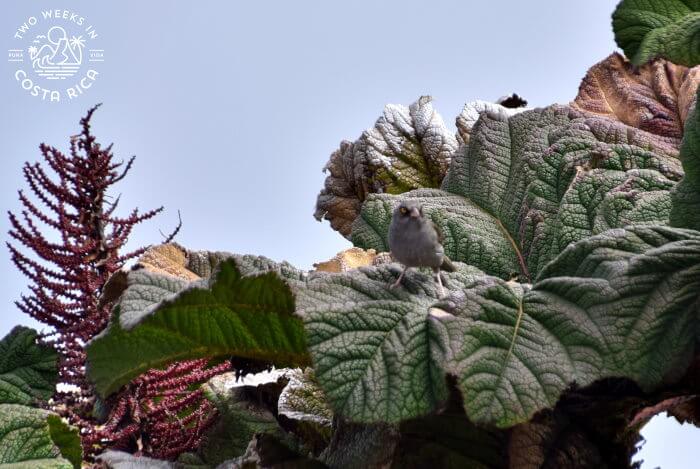
Irazu’s Volcanic Craters
Once you reach the end of the paved walkway, you’ll be at the most impressive site of Irazu, its main crater. This sprawling crater is an astounding 1,050 meters (3,444 feet) in diameter and 300 meters (984 feet) deep.
From the viewing area, you can really get a sense of its grandeur. Looking down into the wide, gray cavity, you can’t even take in the full scope of the crater in one moment. Take a look at our video below to see what we mean.
The inside of the crater has varying shades of gray, black, and white from old lava flows and volcanic activity.
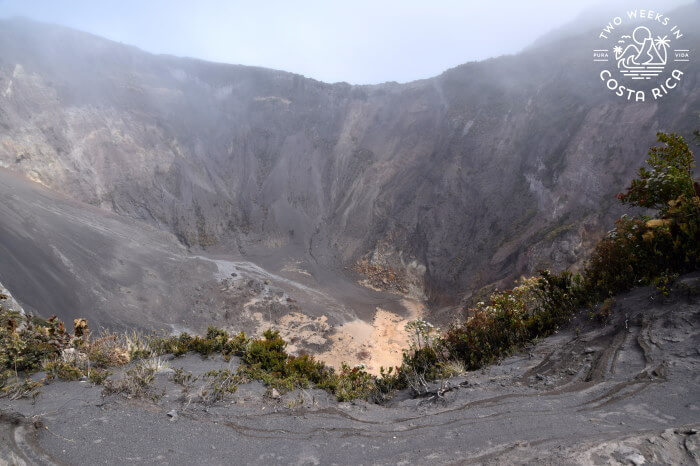
During certain times of year when it is rainy, there is a beautiful blue-green lake at the bottom.
To the right of the main crater is a smaller inactive crater called Crater Diego de la Haya. You can easily see it from the paved path.
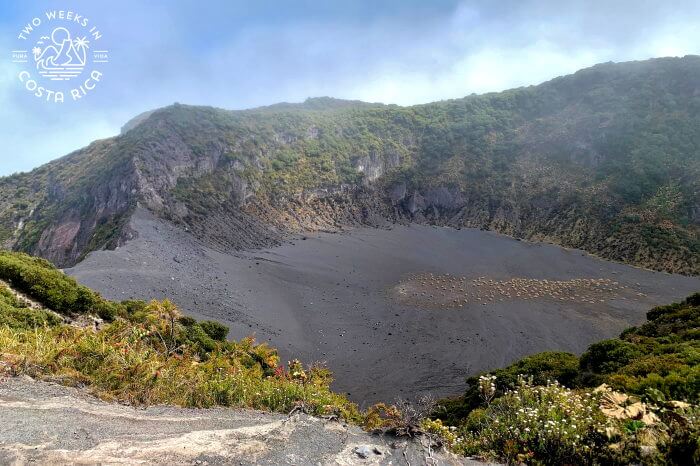
From the main viewing area, you can walk left along the fence to see the main crater from different angles. This takes about 15 or so minutes and is worth doing because you can get some nice views.
Just behind the crater and fence is a huge flat area of land called Playa Hermosa (Beautiful Beach). This is the remains of an old calderic rim. It’s basically gray ash with some volcanic rocks sprinkled in. It feels a bit like walking on the moon, since nothing grows on that volcanic soil, and it’s so windy and foggy.
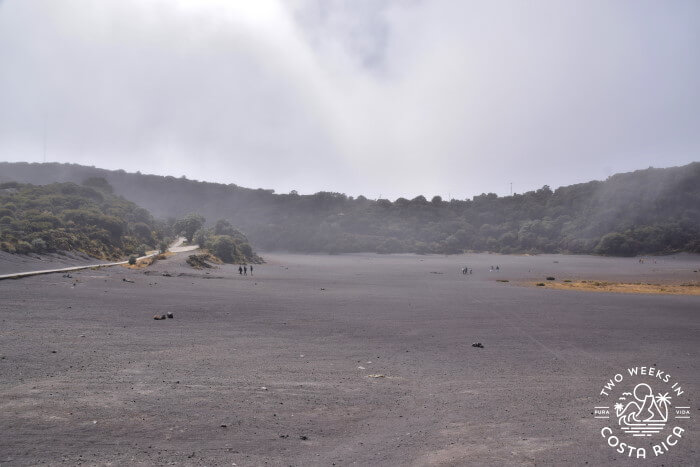
There is no information about the craters along the trail. So it’s nice to have some background before going. For more information about Irazu’s volcanic activity, here is a helpful link. It’s in Spanish but can be translated (we recommend Google Translate).
Buying Tickets for Irazu Volcano National Park
Currently, you need to purchase tickets online in advance to enter the park.
To get your tickets to Irazu Volcano National Park, you must first create an account on the SINAC government website.
Once you are logged in, click “Buy” and select “Online Reservation.”
Next choose the wildlife area, “Parque Nacional Volcan Irazu – Sector Crater.”
Choose your date. For the time, you have to select a specific timeslot. They are on the hour from 8:00 a.m. to 2:00 p.m. 150 people are allowed per hour. See the Tips section, below, for the best time to visit.
Select the number of adults/children.
Click “Continue.” You will be taken to a payment screen to enter your credit card details (you have 10 minutes to complete the transaction).
Once you complete the transaction, a confirmation will be emailed to you. Keep this to show the park ranger when entering. They will need the verification number from the reservation to look you up in the system.
Park Hours
Irazu Volcano National Park is open every day (including holidays) from 8:00 a.m. to 4:00 p.m. The last entrance is at 2:00 p.m.
Cost
Foreigners: $15 per person adults. $5 children ages 2-12. Free for children 2 and under.
Citizens and Residents: 1,000 colones adults. 500 colones children ages 2-12. Free for children 2 and under. Valid identification required when checking into the park.
Parking: You will also have to pay a parking fee of 1,100 colones (about $2). You’ll receive a small slip of paper at the vehicle entrance to the park. Before leaving, you must pay at the gift shop and get it validated.
Accessibility
The parking area and trail to the main crater is fully paved. It is handicap accessible.
The paved portion ends once you reach the main crater. If you want to explore the area to the left, the terrain is sandy, but hard-packed, flat, and uniform. It would be possible to do in a wheelchair.
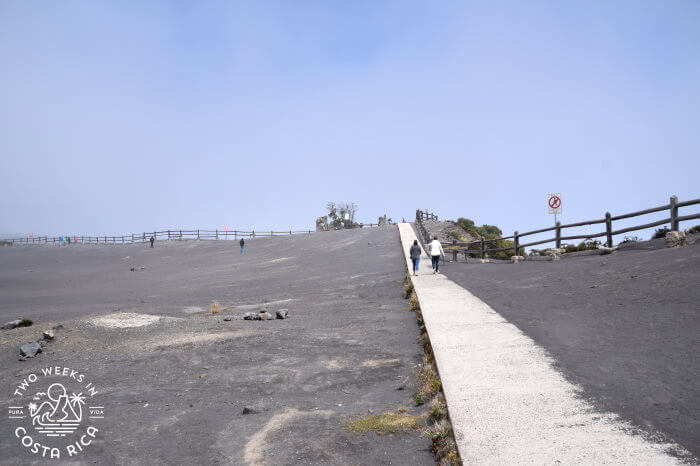
Driving Directions
From San Jose, head east to Cartago. In Cartago, go north out of the city and connect to Route 219. This paved road leads all the way to the national park. There are many signs along the way for the park.
From the Orosi Valley, the drive to Irazu is about one hour. Head to Cartago and then follow the same directions above.
Tips for Visiting Irazu Volcano National Park
When to Go
The crater can be fogged over at any time, but you have a better chance of seeing it if you get there early in the morning.
We visited at 9:00 a.m. and were very worried because we drove through a lot of clouds and rain on the way there. However, when we got to the trail, we were able to see the entire crater for several minutes. Clouds and fog rolled in periodically after that, but it comes and goes so be patient.
Here is a link to a government website with some basic information on current conditions at Irazu.
Getting there early also will help you avoid the crowds. Irazu Volcano is a popular attraction in Costa Rica. Tour buses full of both tourists and locals started pulling in around 10:00 a.m. on our visit.
What to Bring
Since Irazu Volcano is at a high altitude, it’s quite cool compared to the rest of Costa Rica. Temperatures are around 5°C/41°F to 9°C/48.2°F. Be sure to wear pants, layered long-sleeve shirts or a sweatshirt, a raincoat or windbreaker with a hood, and closed shoes. It’s extremely windy near the craters, which makes it feel even cooler. We live at the beach and were all freezing, even with multiple layers!
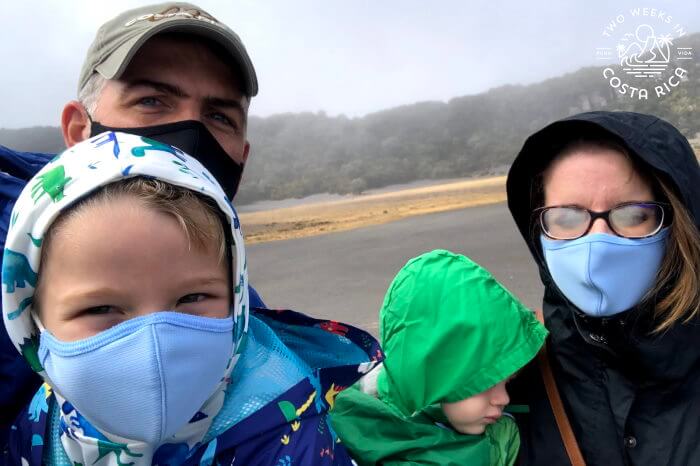
If you wear glasses, opt for contacts that day so that you can see. Jenn’s glasses were covered in tiny water droplets most of the time.
Taking Pictures
There is a fence along the edge of the crater to keep you from getting too close and falling in. You can still get some nice pictures, though. If you follow the fence out to the left, you can get a better view down inside the crater.
Facilities
At the parking area, there is a small bathroom and also a little shop that sells souvenirs, drinks, and snacks.
Outside the shop, you’ll find five or so picnic tables to take a break or have some food.
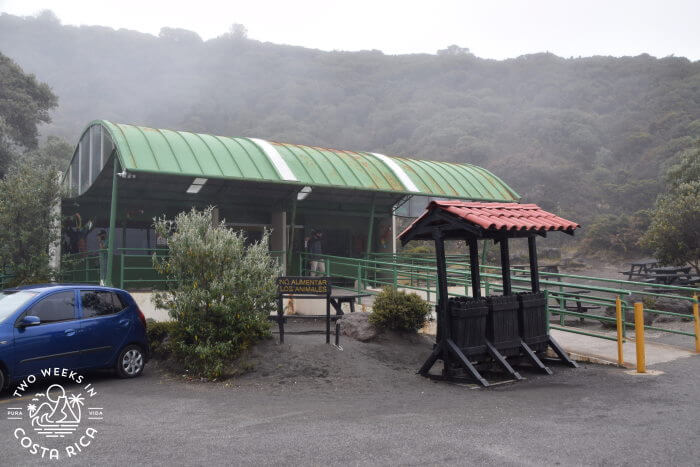
Conclusion
Irazu Volcano is definitely an impressive sight. Although we enjoyed our visit, it is one of those places that you probably only need to see once. We do recommend it if you’re visiting the Orosi Valley or looking to see a volcano from San Jose. Not only do you get to be standing on top of an active volcano, but the surrounding countryside is gorgeous and tranquil.
Have a question about visiting Irazu Volcano? Ask us below.
Looking for more information to plan your visit to Costa Rica? Check out these posts:
How to Spend One or Two Days in San Jose: Downtown San Jose is Costa Rica’s cultural center. Read our guide about options for museums, theaters, and local markets.
Guayabo National Monument: An interesting historical sight not too far from Irazu is Guayabo National Monument. You can walk these ancient ruins for clues on how Costa Rica’s pre-Columbian people lived.
Orosi Valley Coffee Tour: Café Artesanal Los Sauces – Another great activity in this area is a coffee tour. Check out our visit to this authentic coffee cooperative in the town of Orosi.
